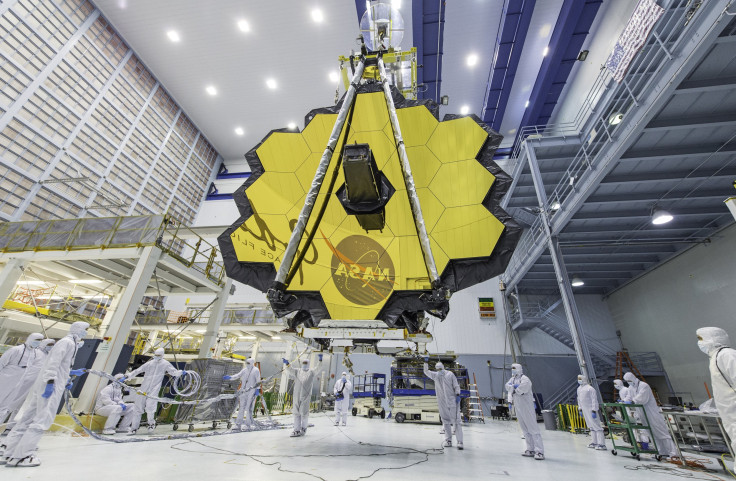Why James Webb Space Telescope Passing Its Recent Test Is Important
KEY POINTS
- James Webb Space Telescope recently passed a milestone test
- Test showed that Webb would be able to communicate with Earth once in orbit
- Its capability is important for the 'next generation' telescope's mission
The James Webb Space Telescope (JWST or Webb) just passed a milestone test that's critical for its all-important mission. This brings the next generation telescope a major step closer to exploring the cosmos.
The James Webb Space Telescope is the most powerful and complex space telescope to be built and, once it launches in October 2021, it will become the prime space observatory for astronomers all over the world for the next decade. Building on the work of the Hubble Space Telescope, Webb will explore the cosmos, from the beginnings of the Universe and the assembly of galaxies, to the processes that create solar systems capable of supporting life.
Naturally, a major part of its mission is responding to commands from the Earth and sending back the data it has gathered from its orbit a million miles away. It is a critical capability that is imperative for the success of its mission.
Only recently, NASA conducted a "Ground Segment Test" that tested these capabilities in Webb as it sits fully assembled at the Mission Operations Center at the Space Telescope Institute (STScI) in Maryland. For the milestone test, the mission team of nearly 100 people treated Webb as though it was already a million miles away by connecting it to the Deep Space Network, which NASA uses to communicate with spacecrafts, and connecting it to special equipment that mimicked the link it will have once in orbit.
Inside Webb’s Mission Operations Center, Test Operator Jessica Hart is seen on-console at the Space Telescope Science Institute in Baltimore, Maryland monitoring test progress with social distancing protocol in place.
— NASA Webb Telescope (@NASAWebb) August 24, 2020
Credits: @stsci/Amanda Arvai pic.twitter.com/qWFVLljTeO
Webb successfully completed and passed the test, showing that it will properly respond to commands from Earth once it's already in orbit.
"This was the first time we have done this with both the actual Webb flight hardware and ground system. We've performed pieces of this test as the observatory was being assembled, but this is the first ever, and fully successful, end-to-end operation of the observatory and ground segment," Deputy Division Head of Mission Operations at STScI, Amanda Arvai, said in a NASA news release. "This is a big milestone for the project, and very rewarding to see Webb working as expected."
Passing the test not only shows that Webb is working as designed but, that it will be able to successfully downlink the all-important scientific data that it will gather back to Earth.
Being the most advanced space observatory of the next decade, it could send back data that will help solve some of the mysteries of the cosmos. And as Hubble's successor, not replacement as some have called it, Webb will build and even "go beyond" the incredible work of Hubble.

© Copyright IBTimes 2025. All rights reserved.





















